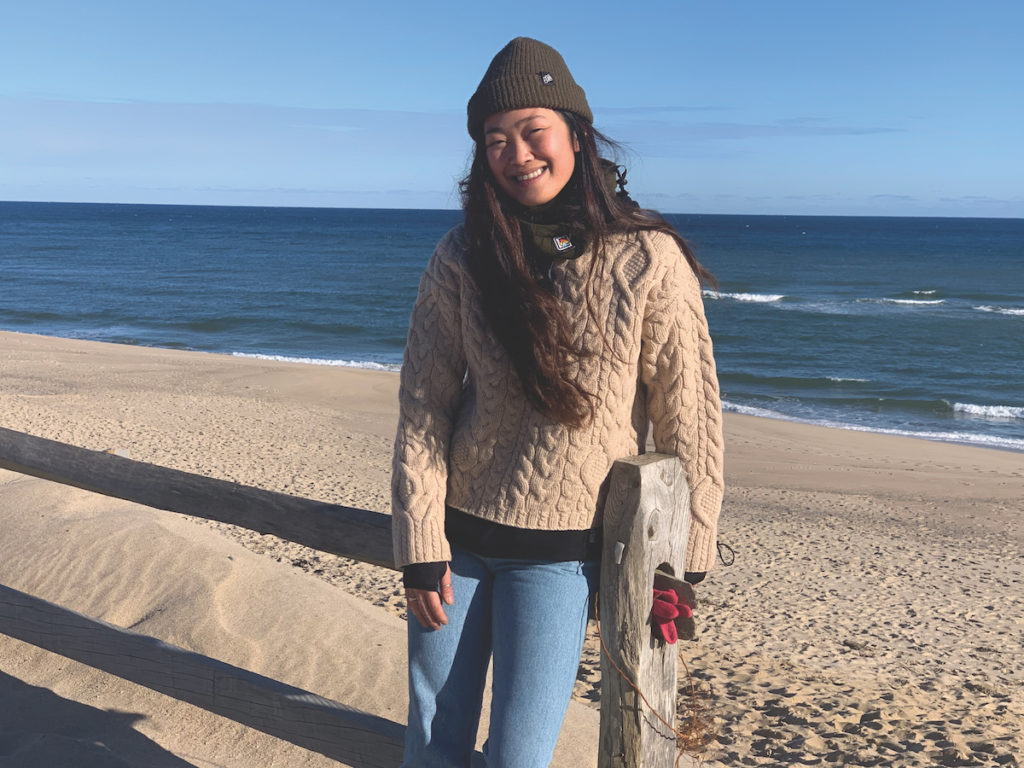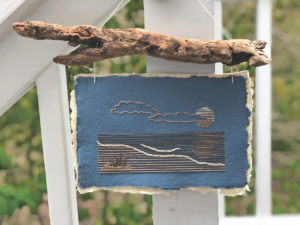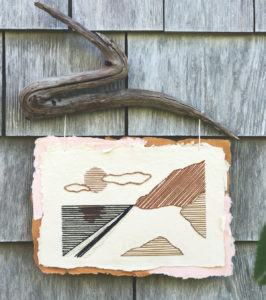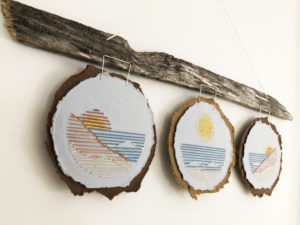
On a sunny winter’s day, SunMi Scheinler leans against a weathered wood fence at Newcomb Hollow Beach in Wellfleet. Behind her, a calm ocean stretches to the horizon. She takes a deep breath of salty air.
“Living out here has made me realize that you need a lot less to be happy,” she says. “It’s very hard for me to think of being anywhere else.”

Scheinler was born in Hawaii, where she spent the first six years of her life, then moved to Florida and New Hampshire. “I don’t have many memories of Hawaii, but I have always felt connected to water,” she says. After spending summers in Truro with her family as a teenager, Scheinler decided to try living on the Outer Cape year-round 10 years ago, when she was 19.
“It took me a couple of years to adjust to the lifestyle here,” she says. “I was broke. One winter, when I was feeling bad for myself, I went out alone to the ocean.” She had an epiphany at the beach. “The ocean brought me a sense of security — it brought peacefulness, it brought inspiration. It sparked my creativity,” Scheinler says. “I realized this is where I can find everything I long for in life.”
She found a year-round job at the Provincetown tattoo shop Mooncusser, helping with administration. “I got really lucky,” she says. “The people I work with are incredibly talented, not only at drawing and tattooing, but so many different facets of art.”
Scheinler had been interested since childhood in creating art herself, but she had never found a medium that spoke to her. Then, during the spring of 2020, with the tattoo shop closed due to Covid and time on her hands, she discovered a traditional Japanese embroidery technique called sashiko.

“I was mending a pair of jeans when a friend introduced me to it,” Scheinler says. “Japanese culture is very much about mending broken items to bring them back to life. Sashiko means ‘little stabs’ in Japanese. The reason this specific technique feels so special is the intention with which you apply the hand stitches. It is a form of meditation that you need to be present for in a way I was not accustomed to.”
Scheinler, who is of Korean heritage, says that “the connection isn’t to one specific culture but with yourself — and all of yourself. It’s a way of slowing down how you move through life, which leads you to appreciate everything around you.”
She is entirely self-taught. Beginning by stitching images of the Outer Cape ocean and beaches that she loves, using photographs and her memory, she has since developed her own adaptation of sashiko technique. First, she creates an abstracted land- or seascape, using geometric lines and shapes. Then, she draws that image backwards (a negative) on a piece of graph paper. She makes her stitches through this paper onto the front side of her artwork, where the image is flipped. The front is layered cold-pressed cotton rag paper of different colors, a material she says she uses “because of its consistency and forgiveness.”
The finished scenes that Scheinler creates have a similar theme. “Most of my images are inspired by the ocean and the dunes, the moon and sun, and the marshes,” she says. Yet with each piece, she discovers new depths of color, shade, form, and pattern. “There is no right or wrong in sashiko,” Scheinler says.

Besides requiring a specific kind of needle, sashiko thread “differs from the usual embroidery thread in its thickness and in the dyeing process,” she says. “The thread is dyed with persimmon, indigo, and other natural dyes, creating colors that are reflective of those you’d find in nature.” The subtle palette of sashiko threads is ideally suited to the Outer Cape landscape.
She recently began to experiment with dyeing the thread herself, using natural materials such as turmeric and coffee grounds to create shades of yellow. “You can dye with onion peels and avocado pits,” she says. “There are a lot of plants you can forage on Cape Cod to make into a natural dye. That is something I would like to look into.”
Scheinler sells her work at present through an Instagram account dedicated to her art (@sunmi_sewn), and she can barely keep up with all the commissions she gets. “I’m still humbled that people are enjoying what I am creating,” she says. “It’s an incredible feeling.”
Her customers are drawn to the sense of tranquility and joy in her work. “It’s hard to be fully in tune with yourself when there’s so much background noise in life — to be present to the moment,” she says. “I’m just so grateful to have and share this wonderful outlet. And it will be nice to see it grow.”



